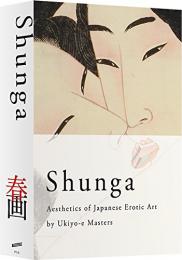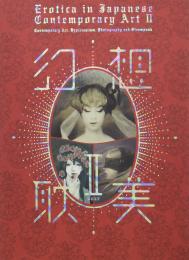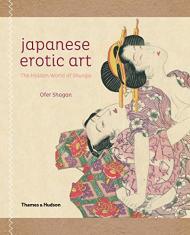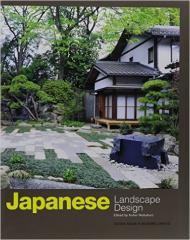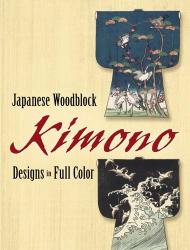В этой книге многое впервые. Впервые на русском издается книга посвященная Японской откровенной гравюре Сюнга. Впервые в издании представлено более 700 произведений. Когда мы их отбирали из трехтысячной коллекции шли настоящие редакционно-искусствоведческие баталии. В книгу вошли самые интересные, значимые и редкие работы. Впервые проведена атрибуция некоторых гравюр и книг. Хвастаться не хорошо, но это действительно круто!
О Сюнга
С момента создания этих волнующих образов прошли сотни лет, однако японская эротическая гравюра продолжает приковывать взгляды зрителей по всему миру.
Можно долго спорить о том, кто впервые взялся за изображение на бумаге, в глине или мраморе сексуальных сцен. Их можно обнаружить еще на фресках древнего Рима или на античных вазах Греции. Вся Европа в эпоху Возрождения не брезговала картинками, поднимающими «тонус». Да почему только Европа? Нечто подобное было характерно и для древнего Перу. А что уж сказать об Индии, где Камасутра служит своеобразной азбукой для мужчин и женщин! Славился этим искусством и Китай. Но если спросить знатока этого жанра о наиболее эффектных образцах изобразительного искусства, то ответ будет однозначным: на этом поприще удачнее всего потрудились мастера ксилографии Японии XVII-XIX веков.
Отнюдь не намекаем на сексуальную распущенность японских мастеров культуры. Дело в том, что взаимоотношения полов во всем их разнообразии в Японии всегда воспринимались как нечто естественное, причем не ограниченное сугубо семейными рамками в японской религии – синтоизме – не удастся найти ничего, что бросало бы мрачную тень на секс.
Даже древние мифы, посвященные космогоническим процессам, нередко насыщены сугубо сексуальными подробностями. Возьмем, к примеру, описание процесса зарождения мира, изложенное в самом древнем письменном памятнике Японии – «Кодзики», датированным 712 годом. Результатом этого вполне невинного, с точки зрения японца, божественного инцеста и стало появление Японского архипелага, а вместе с ним и всего мира, в котором мы живем. В стране издавна существовал (и поныне сохраняется!) фаллический культ, связанный с прославлением богини плодородия.
Сюнга в дословном переводе означает «весенние картинки». Почему японцы дали такое название рисункам? Вернее всего, этот термин был позаимствован у китайцев. Но в Японии он прижился. Может быть, это связано с характерным для этого народа четким ощущением смены времен года. Именно весной под теплыми солнечными лучами не только оживает природа, но и обостряются человеческие чувства, эмоции переполняют душу.
Книжки-альбомы сюнга изначально считались лучшим и непременным подарком молодоженам со стороны родителей, родственников или друзей. Часть гравюр в книжке изображала весьма реалистичные ситуации, другая была более фантазийной, где любовники принимали поистине невозможные позы, доступные, пожалуй, лишь опытным акробатам.
Книгами сюнга в стране увлекались все поголовно, не зависимо от материального или социального статуса, старики и молодежь, мужчины и женщины. Правительство Японии не раз пыталось лишить свой народ столь дешевого и доступного развлечения. Однако это приводило лишь к росту ухищрений участников торговых сделок.
Среди книг сюнга множество шедевров таких именитых и талантливых мастеров гравюры, как Моронобу Хисикава, Хокусаи Кацусика, Иссё Миягава, Сигэнобу Янагава, Утамаро Китагава, Эйсэн Томиока.
Авторы графических листов предельно откровенно, с мельчайшими анатомическими подробностями изображали моменты интимных контактов между мужчинами и женщинами, мужчинами и мужчинами, женщинами и женщинами, людьми и животными (например, осьминогами, тиграми), женщинами, мужчинами и потусторонними существами…
Сюнга вполне обоснованно может считаться прародителем таких современных жанров искусства, широко распространившихся по современному миру, как анимэ и манга.

